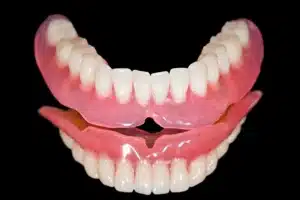There are a lot of different treatments for gum disease, all of which are determined based on the severity of the infection. Some procedures can be done by a general dentist and hygienist, while others may require a periodontist and oral surgeon.
Gum disease should never go untreated! In this article, we discuss the different treatments that can help remove and remedy the infected gums. This information may be helpful to someone suffering from inflamed, irritated or severely diseased gums. Read on to find out more about the different treatments.
Types of treatment for gum disease
Below, we outline some of the most common ways to treat gum disease. Ultimately, it is best to consult with a general dentist so that they can determine whether or not a periodontist needs to provide advanced treatment.
Professional deep cleaning
A dental cleaning done by a hygienist is one of the first steps for gum disease treatment. This can be done at a general dentist’s office and often removes the threat of gum disease, if it is in the early stages. A deep cleaning will remove any plaque and tartar that may be built-up which could be the root cause of the gum disease.
Scaling and root planing
This procedure is non-surgical, but it is done under local anesthetic because some discomfort is involved. A general dentist will remove plaque and tartar from the gum lines and further to help remove any bacteria that may be causing the gums to be infected. Scraping takes place which removes the buildup and then smoothing takes place which reduces any rough spots that could be holding bacteria.
Surgical procedures
When the gums become severely infected, it may be necessary for a periodontist and oral surgeon to administer a more advanced treatment. The following is a list of surgical procedures that may be necessary in order to treat gum disease:
– Flap surgery/pocket reduction: The gums are lifted back during surgery and any signs of tartar or plaque are removed. The surgeon will place the gums back so that they fit tightly and securely around the teeth.
– Bone graft: When the gums become extremely infected, they will likely destroy the bones within the mouth. A bone graft may be required to restore the lost bone.
– Soft tissue grafts: These grafts are done in order to replace the missing tissue that may have been lost due to the gums deteriorating from the infection. Tissue from other parts of the body will be used to replace the gum tissue.
– Tissue regeneration: This surgical procedure involves flap surgery, as well as the placement of mesh to help promote and regenerate gum tissue.
Contact us today!
Concerned you need gum disease treatment? Give us a call today. Our team of general dentists can evaluate your gums to determine what is best for them. We are here to help you!
Request an appointment here: https://normandaledental.net or call Normandale Dental at (952) 888-9661 for an appointment in our Bloomington office.
Check out what others are saying about our services on Yelp: Read our Yelp reviews.
[recent-blogs count=”4″ layout=”horizontal”]





